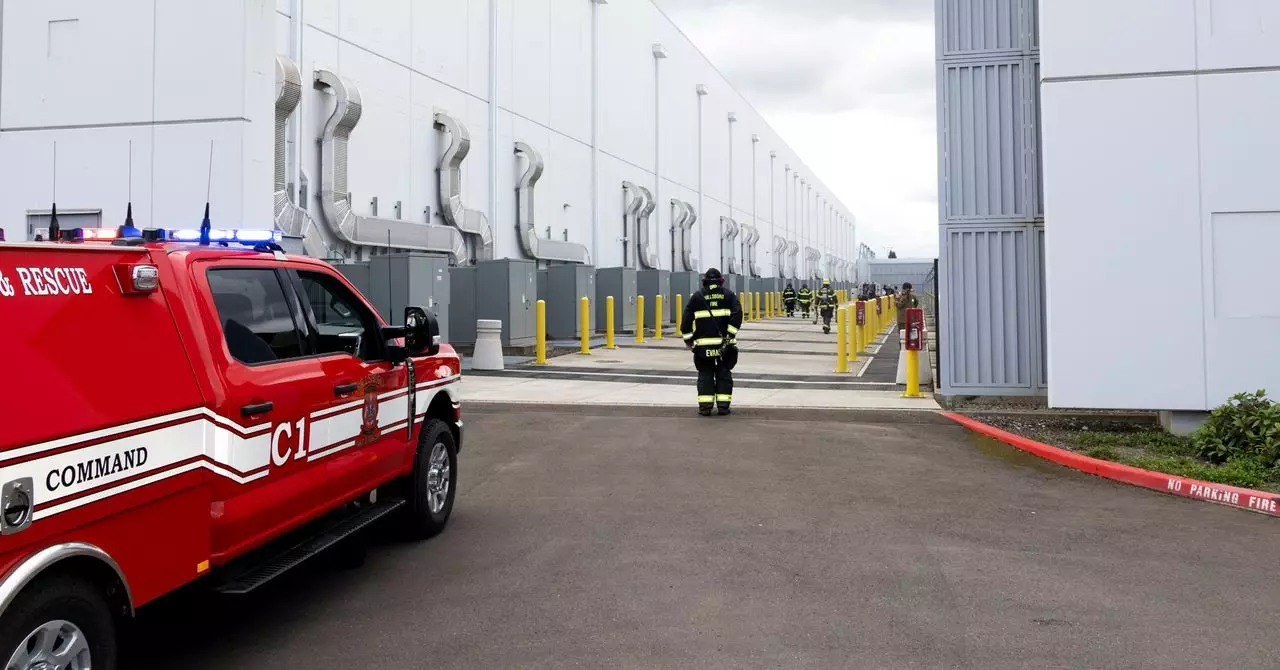In the rapidly evolving landscape of digital infrastructure, data centers stand as the silent backbone of our interconnected world. While these facilities are engineered for resilience, the recent incendiary event at a high-profile data hub operated by Digital Realty, linked to Elon Musk’s X, reveals a disturbing vulnerability. This incident underscores the fact that as our reliance on AI and large-scale computational systems intensifies, so does the risk profile of the infrastructure supporting them. The fire’s origin—a suspected electrical malfunction within a UPS cabinet—illuminates how even industry-standard hardware can become a ticking time bomb when pushed beyond their limits.
The intricate design of data centers, characterized by dense power configurations and extensive cooling requirements, inherently introduces potential failure points. Power backup units, like the Schneider Electric Galaxy VX UPS involved here, are vital yet potentially hazardous components. Their metal casings, designed to house large battery packs, can become focal points for fires triggered by electrical anomalies. Given that these units operate under high loads, an electrical surge or mechanical failure can ignite catastrophic fires, especially if cooling measures falter. Ironically, the same cooling systems designed to prevent overheating could, if improperly managed, contribute to fire hazards by allowing temperature build-ups or poor heat dissipation.
The Looming Shadow of AI-Driven Power Demands
The growth of artificial intelligence has exponentially increased energy demands within data centers. These advanced systems are not only computationally intensive but also generate immense heat, demanding sophisticated cooling solutions and robust electrical infrastructure. As AI workloads swell, the strain on power systems intensifies, making failures more likely and more damaging. The recent fire, believed to be electrical in origin, exemplifies this emerging blind spot: infrastructure designed for efficiency and capacity might inadvertently escalate risks if not continuously upgraded and monitored.
Furthermore, the incident reveals a broader issue about the readiness of current data center designs to handle such escalating loads. The industry’s reliance on established hardware, like uninterruptible power supplies and lithium-ion batteries, might be ill-suited for future demands if preventative measures are not adequately scaled or innovated upon. This incident signals a pressing need for redefining safety standards—particularly as the operational environment becomes more demanding and complex.
The Myth of the Safety of Standard Equipment
While data centers are considered highly reliable, the reality is that standard equipment—such as UPS units—are susceptible to failure, particularly under conditions of electrical stress or inadequate cooling. The assumption that these devices are inherently safe can be misleading. The recent event demolishes this misconception, demonstrating that even widely-used, industry-standard components can be ignition points. The fire’s initial trigger inside the UPS cabinet indicates that routine equipment can harbor latent risks that only manifest under specific conditions.
The fact that investigators couldn’t determine the exact cause adds to the narrative that, at this stage of our digital evolution, we are operating in a domain with significant unknowns. Electrical failures, mechanical issues, or exceeding design parameters can all precipitate crises without warning. This necessitates a fundamental reassessment of safety protocols, regular maintenance, and real-time monitoring to mitigate potential disasters.
Neglecting the Human and Environmental Toll
Though no injuries were reported, the financial and operational consequences are stark. The estimated losses of over $260,000—and the destruction of critical power infrastructure—highlight the tangible costs of underestimating fire risks. Beyond monetary implications, such fires threaten data integrity, disrupt services, and erode trust in the digital infrastructure we increasingly depend upon.
Environmental considerations also come into focus. Fires in data centers can release hazardous materials, compromise data security, and result in energy waste. As data centers grow in number and size, the cumulative impact of such incidents becomes a pressing concern. It’s imperative that operators view fire safety as an integral part of sustainability strategies, reinforcing that resilience goes hand in hand with environmental responsibility.
Charting the Future: Prioritizing Innovation and Vigilance
This incident is a clarion call for the industry to reevaluate safety paradigms. Building smarter, more resilient data centers requires not just advanced hardware, but also innovative safety mechanisms—such as enhanced fire suppression systems, real-time diagnostics, and autonomous shutdown protocols triggered at the first signs of anomalies. The industry should prioritize predictive maintenance, leveraging AI itself to identify weaknesses before they escalate into crises.
Moreover, accountability and transparency are crucial. Digital Realty’s reluctance to elaborate on improvements post-incident reflects a broader tendency to cloak vulnerabilities rather than confront them openly. For progress, stakeholders must demand more rigorous oversight, industry-wide safety standards, and continuous updating of infrastructure to match the scale and complexity of modern AI workloads.
The fires at data centers aren’t mere accidents—they are symptomatic of a larger challenge: our infrastructure’s readiness to handle the relentless growth of digital and AI demands. To secure the future of data management and innovation, we must confront these risks head-on, embracing a culture of resilience, proactive safety, and technological evolution.

